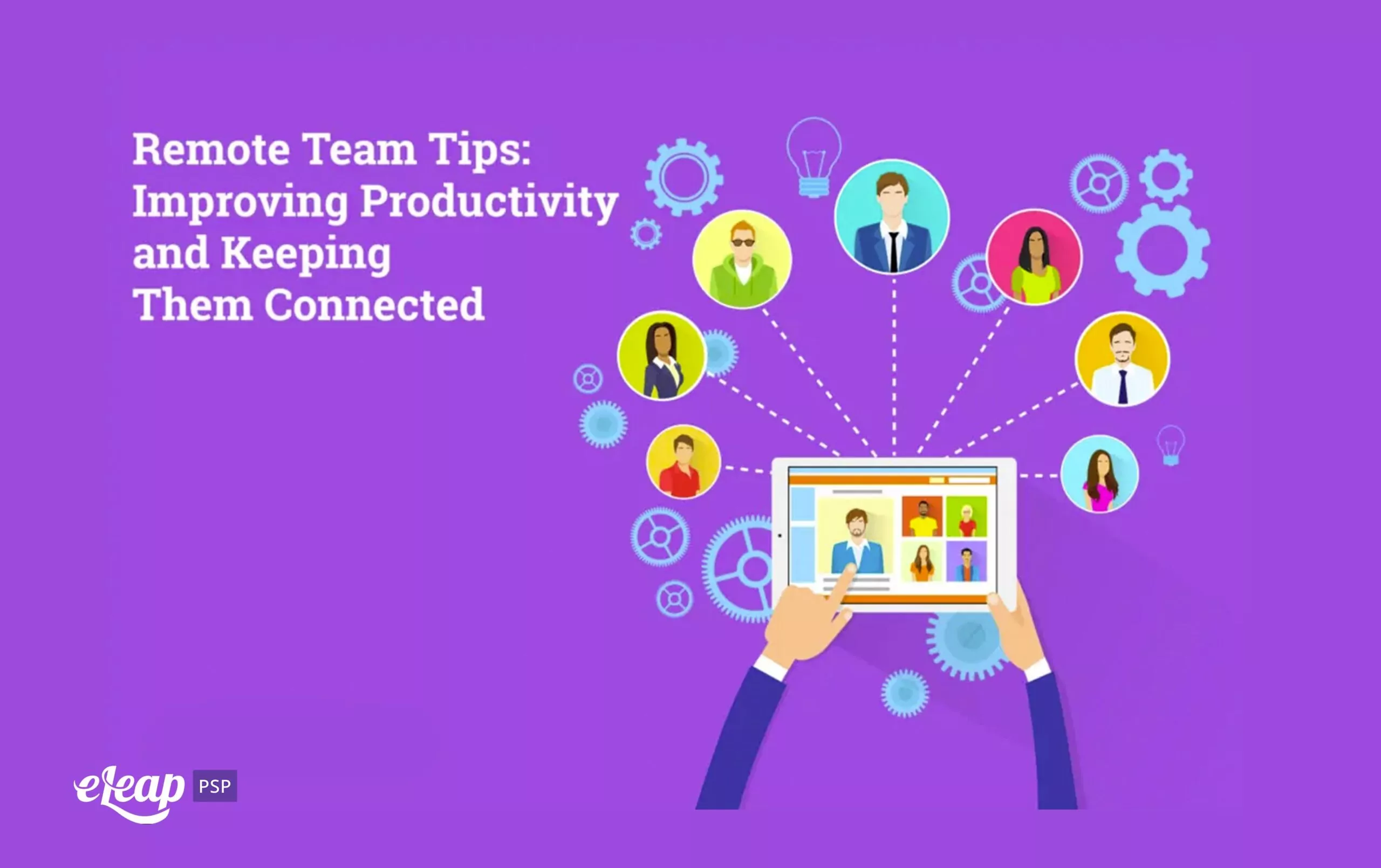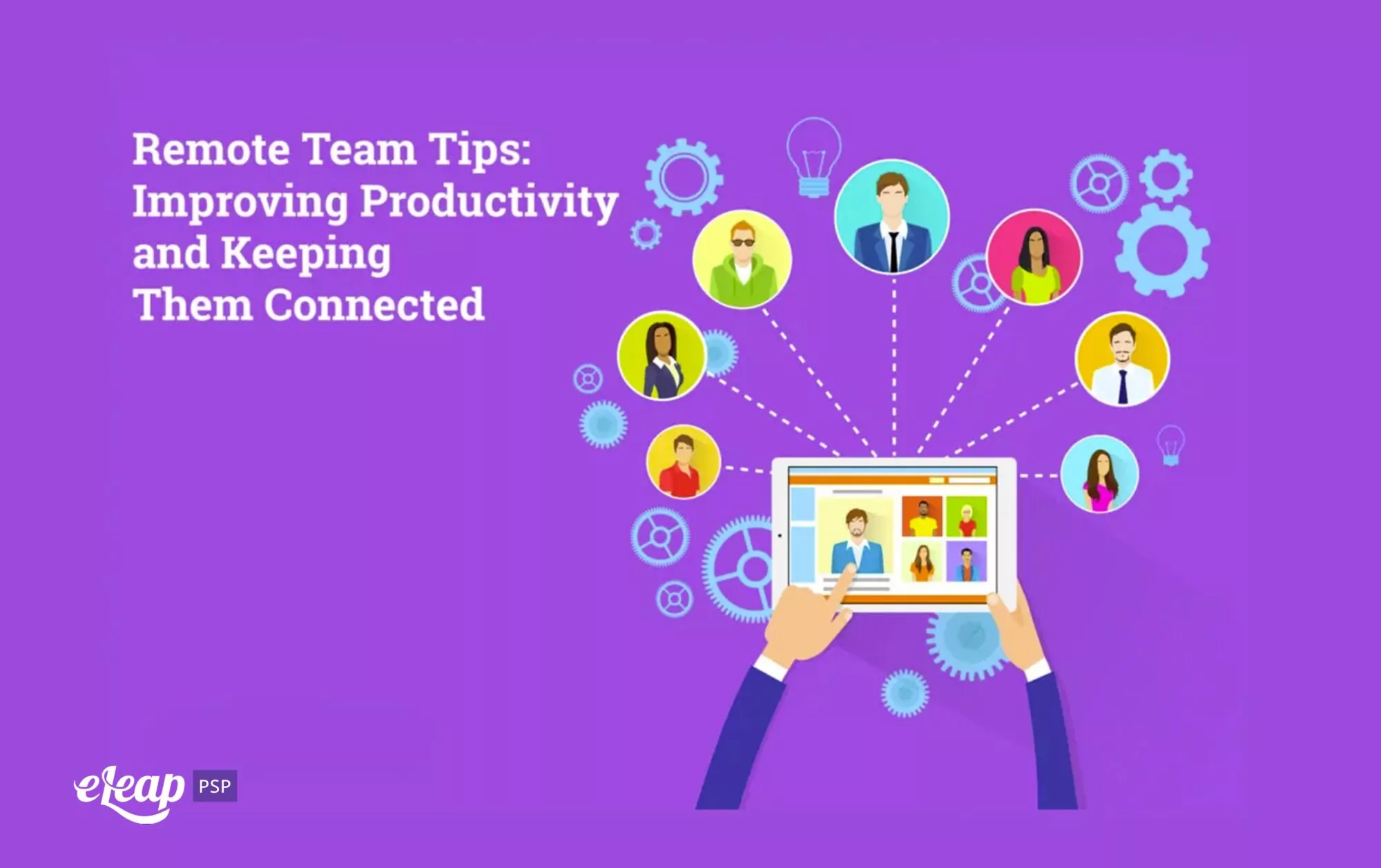Remote Team Tips: Improving Productivity and Keeping Them Connected

Remote work has had an incredible impact on organizations large and small. As most of us continue to work from home, those impacts are only going to grow. While some of those might be positive – more time with the family, for instance – others are not so beneficial. You might find that your team members are less connected, that their productivity dwindles, and all this despite their best efforts. How can you get effective remote team working for your organization?
The good news is that there are plenty of ways to help keep your team productive and connected. In this post, we’ll walk you through some of the most important options. You might just find that it’s easier than you think.

Make Gratitude Part of Your Interactions
While you’re not going to have many face-to-face meetings, you’re still getting together, often daily. Remote work can quickly make those events feel stiff and uncomfortable, which fosters a sense of disconnection with your team. You can help everyone reconnect with one another while simultaneously building a more positive culture if you take a few moments in each meeting to focus on gratitude.
Gratitude is an incredibly powerful force and if you can cultivate it within yourself, you’ll find that it changes how you see everything. Integrating gratitude into your meetings can be surprisingly simple, as well. For instance, suppose you have a Zoom call with your team. Before the meeting gets underway, go around the “table” and have everyone list off one thing they’re grateful for today or this week.
Make Time to Celebrate Wins
If your team was in the office, you would be celebrating accomplishments. That might be something as simple as high-fiving someone while walking down the hallway after they completed a particularly in-depth report, or it could be ordering pizza on Friday to reward the entire team for a job well done. Don’t let remote work stop you from celebrating successes!
How do you celebrate remotely, though? You’ll need to get creative. It could be something as simple as a shoutout during a team meeting. Or it could be something more relevant to the achievement of the team or team member – paid time off, a new set of headphones, or even ordering a pizza to be delivered to their homes.
What you do is less important than remembering to make time to celebrate those wins. If you fail to do so, your team’s morale will take a hit. It damages the culture of the company, too.
Watch Your Wording
With remote work comes a slew of new communication methods. Well, technically they’re extant methods that are just taking center stage at the moment. Most of these are digital and faceless.
That is, you cannot communicate with each other directly (video conferencing aside). Email, text chat, Slack, Trello – these are all great tools but they eliminate body language, which comprises most of our communication. It becomes very easy to misunderstand things. Sarcasm gets lost. Jokes fall flat. The upshot is that without context, much of our communication becomes miscommunication, so watch your wording and mind your language.
Help Your Team Focus on Ergonomics
Your business has some degree of control over ergonomics in the workplace since you supply the office chairs, the desks, the workstations, and more. However, in a remote work situation, that’s not the case. It all falls on your team members, and that’s not necessarily a good thing.
Without an ergonomic home office, your team members will be less productive. They will also be more prone to injuries, such as carpal tunnel syndrome and neck injuries. Make sure that you encourage your team members to set up an ergonomic home office in whatever way works for them.
Understand that this may require an additional investment by the company – ergonomic keyboards, monitor stands, and the like may be a small price to pay to maintain productivity and help your employees avoid injuries.
Help Your Team Set Time Boundaries
One thing that takes most people by surprise in a remote work situation is how very easy it is for the already-blurred line between personal time and work time to disappear completely. Chances are good that you’ve found yourself, laptop in hand, sitting on the couch working while you’re supposed to be enjoying a family movie. That’s occurring throughout your team.
The problem here is that when work bleeds over into personal time, it becomes a great demotivator. It creates negative feelings within family members, too. After all, if you’re supposed to be spending time with your partner, spouse, or kids, but you’re answering work emails instead, it suggests that you don’t value the time with them.
To help get around this issue, encourage your team members to create boundaries between work and personal life. One way is to set a hard “no reply” time for emails and chat messages. For example, you might decide to set a cutoff time of 6 PM. If a work email or chat message comes through after that time, it doesn’t get answered until the next day.
Make Time for Fun
All work and no play makes Jack a dull boy. That proverb is as true today as it was decades ago. If you only focus on productivity, you’ll quickly find that life loses its flavor. Make time for fun with your team, as well. Virtual coffee breaks and team happy hours are just two examples of how you can do this.
Yes, productivity might take a temporary hit. However, you’ll find that when you make time for fun, it allows your people to recharge their batteries and come back with more energy. In the end, productivity increases across the curve, rather than decreasing.
A Productive, Connected Team
With the tips we’ve covered, you should find that keeping your team connected and productive is simpler than you might have feared. Remember – it’s all about intentionality and understanding how to create a positive work/life synergy for your team members within a remote work environment.